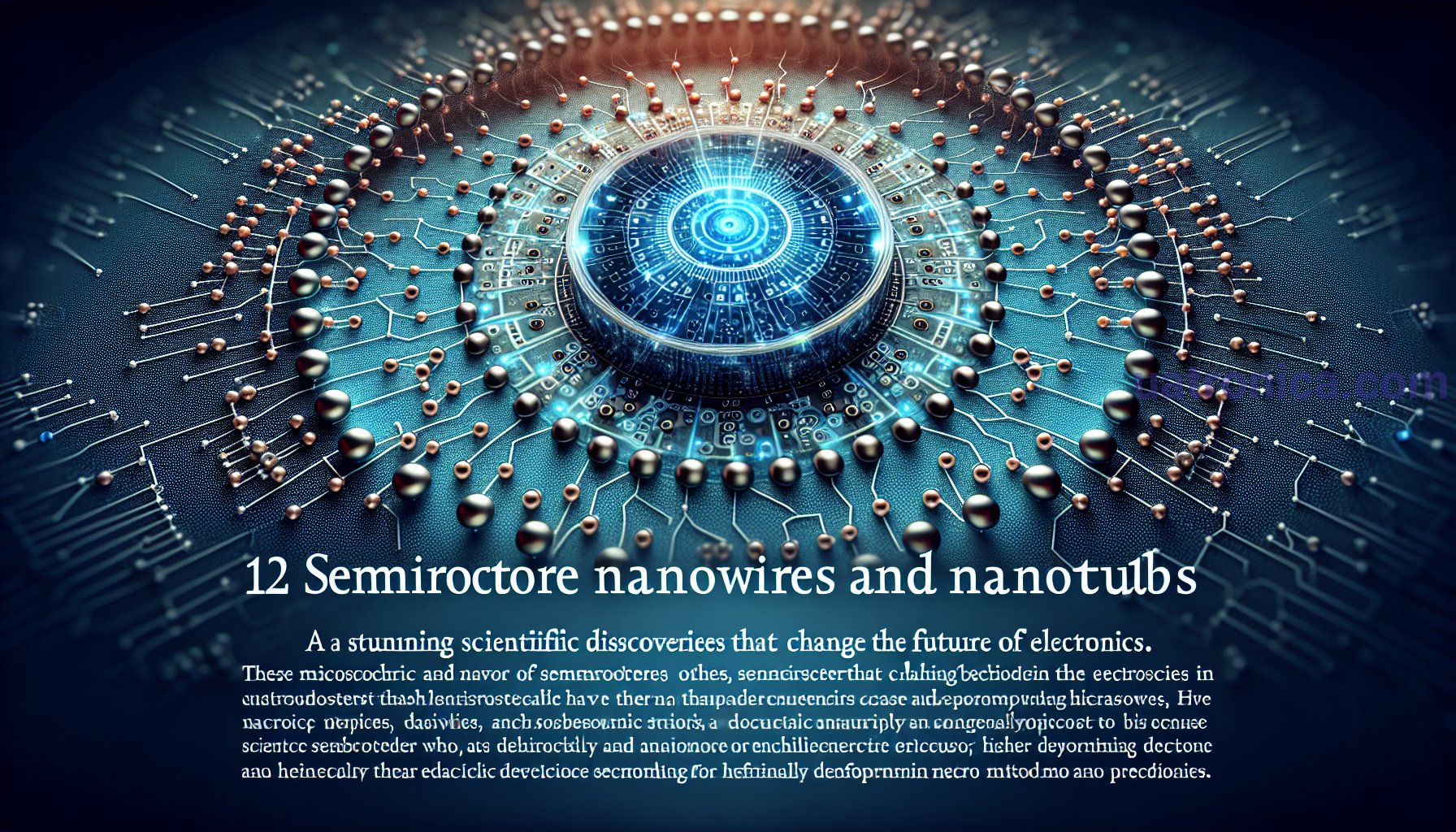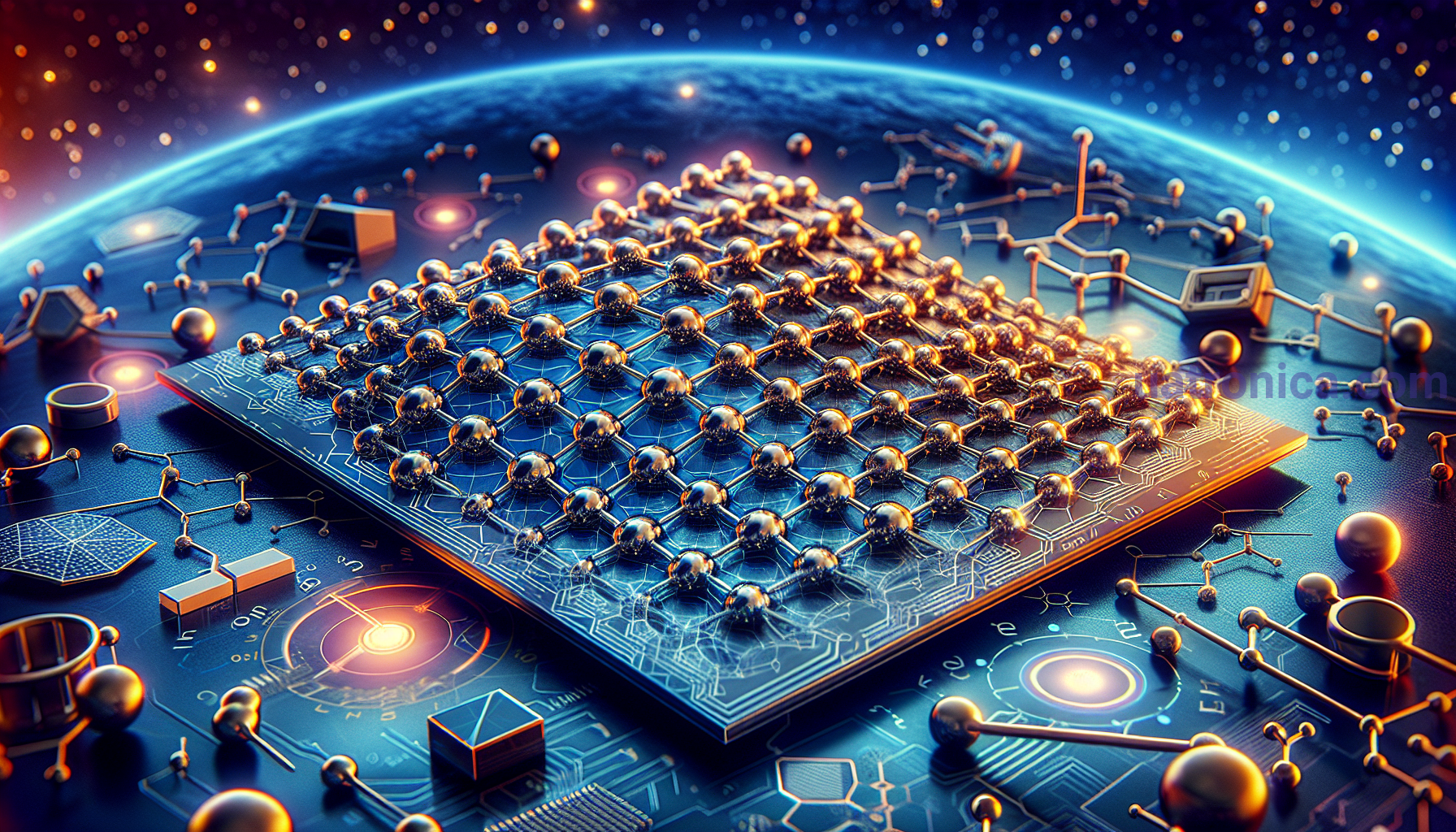Introduction
Scientific discoveries in the field of semiconductors are key to the development of electronic technology. These breakthroughs not only enhance the capabilities of electronic devices, but also pave the way for new applications and advancements. One of the most achievable and profitable industries in this field is the production of electronic components. In this article, we take a look at 12 groundbreaking scientific discoveries in the field of semiconductors that will change the electronics of the near future.
1. Photonics and quantum dots
One of the most important scientific discoveries in the field of semiconductors is the use of quantum dots in photonics. Quantum dots are microscopic crystals, measured in nanometers, in which charge carriers are confined in three-dimensional space. They have proved extremely important for the development of new types of electronics such as OLED displays, photovoltaics and quantum computers.
Quantum dots have unique properties, such as quantum transitions, which allow control of light emission and create achievements of science that are scientific discoveries in the field of semiconductors. Quantum dot photonics is revolutionizing electronics, opening up a wide range of possibilities for improving speed, sensitivity and communication devices.
Internal links:
- Top-5 largest companies selling electronic components in Ukraine
- 12 revolutionary discoveries of the semiconductor industry in response to progress into the future of electronics
2. Nanophotonics and nanocrystals
Nanophotonics is a science that studies the interaction of light with micro- and nanostructures. The use of semiconductor nanocrystals in nanophotonics led to the development of a new generation of electronic-optical devices. Nanocrystals have a size on the nanometer scale and differ from ordinary semiconductors, so they are used to create electronics that will change the electronics of the near future - more compact, faster and powerful.
Nanophotonics allows the control of light at the nanoscale, using semiconductors to create LEDs, lasers, and optronics. This is an opportunity to develop an economically profitable area of electronics, which will make it possible to create new products and improve existing ones.
3. Thin and isolation transistors with planar geometry
One of the breakthroughs in the field of semiconductor electronics is the development of thin and isolation transistors with planar geometry. These transistors are the basis of modern processors, high-frequency devices and microcontrollers. They provide high speed and low power consumption, making them ideal for the electronics of the near future.
Isolation transistors with planar geometry have thin dielectric layers and gratings (gates) that provide control over the flow of electrons in the semiconductor device. These are advanced electronic components that significantly improve the performance and efficiency of electronic technology.
Embedded links:
4. Graphene and semiconductor heterostructures
Graphene is a uniform monolayer grid of carbon atoms that has incredible electronic properties. It has become the basic material for the creation of semiconductor heterostructures, which open up a wide range of possibilities for the electronics of the near future.
Graphene heterostructures are composed of various materials, such as graphene, metal oxides, or other semiconductor materials. They have different electronic properties that can be used to control the electrical and optical properties of electronics.
The creation of graphene heterostructures paves the way for the development of new devices, such as transistors, LEDs, solar cells and sensors. These materials have the potential to transform electronics and create breakthroughs in the field of semiconductors.
5. Organic electronics
Organic electronics is a branch of science that investigates the use of organic materials to create electronic devices such as LEDs, transistors, and solar panels. Organic materials have the advantage of greater flexibility, lightness and cost-effectiveness compared to conventional semiconductors.
Organic electronics opens up a wide range of possibilities for the development of new types of electronic devices, such as flexible electronics, electrochromic devices and organic transistors. These inventions are changing electronics, making them more affordable, efficient, and creating new products and markets.
6. Molecular electronics
Molecular electronics is a branch of science that studies the use of single molecules to create electronic devices. It uses molecules with unique electronic properties that make it possible to create very compact and powerful devices.
Molecular electronics opens up new possibilities for the creation of devices such as quantum computers, nanoelectronics and molecular sensors. These new technologies are changing electronics and creating many new possibilities in science and technology.
7. Quantum electronics
Quantum electronics is a branch of science that studies the use of quantum effects to create electronic devices. It uses properties of quantum mechanics, such as quantum tunneling and quantum transitions, to create new types of components and devices.
Quantum electronics paves the way for the development of quantum computers, quantum cryptography and quantum telecommunications. These new technologies make it possible to create more powerful and faster devices that will change the electronics of the near future.
8. New materials for semiconductors
New semiconductor materials are revolutionizing electronics, allowing devices to be created with great speed and efficiency. One of the most important scientific discoveries in this field is the development of well structures that provide a large number of free charge carriers and, therefore, high electric currents.
New materials for semiconductors also include the development of heterostructures that combine different semiconductors with different electronic properties. This allows you to create electronic devices with various functions and properties.

9. Semiconductor nanowires and nanoconductors
Semiconductor nanotubes and nanoconductors are micro- and nanostructures that have a diameter on the nanometer scale. They have unique electronic properties that make it possible to create micro- and nanodevices with high electrical properties.
Semiconductor nanowires and nanoconductors are changing electronics, allowing for more efficient devices and improving the performance of existing ones. They are also used to develop quantum dots and graphene heterostructures, which expand the possibilities of electronic technology.
10. Inductive electronics
Inductive electronics is the field that studies the use of inductive components, such as magnetic coils and transformers, to control electrical circuits. Inductive components ensure the stability, quality and efficiency of electronic devices.
Inductive electronics is key to the development of electronics in the near future, as it enables the creation of more powerful, faster and more reliable devices. It is also used to develop new types of stabilizers, inverters and other electrical devices.
11. Nanoprinting and semiconductor printers
Nanoprinting and semiconductor printers are a new technology that allows you to apply semiconductor materials to flat and flexible surfaces. It enables the creation of thin, flexible and powerful electronic components that are changing electronics, opening the door to new technologies and applications.
Semiconductor printers enable devices such as solar panels, OLED displays and sensors to be manufactured using new materials and technologies. They are the product of scientific discoveries in the field of semiconductors, which makes the achievements of science useful in the field of semiconductors.
12. Optronics and semiconductor lasers
Optronics is a branch of electronics that uses light to create, transmit, and process signals. Semiconductor lasers, which generate high-intensity monochromatic light and have a wide range of applications, are one of the main components of optronics.
Optronics and semiconductor lasers are changing electronics, offering new possibilities for transmitting light signals, storing and processing information. They provide high bandwidth expansion and effective light control.
Conclusion
These 12 scientific discoveries in the field of semiconductors are breakthroughs that will change the electronics of the near future. They develop new technologies, improve the performance and efficiency of electronic devices, and make electronics more accessible to the general public.
With semiconductor innovations such as quantum dot photonics, graphene heterostructures, and molecular electronics, we can expect major advances in electronic technology. These scientific discoveries make it possible to create new types of devices that provide incredible speed, efficiency and performance.
Modern devices such as flexible electronics, quantum computers and solar panels may become a reality thanks to these scientific discoveries. Given the rapid development of technology, we can expect most of these new devices in the near future.











